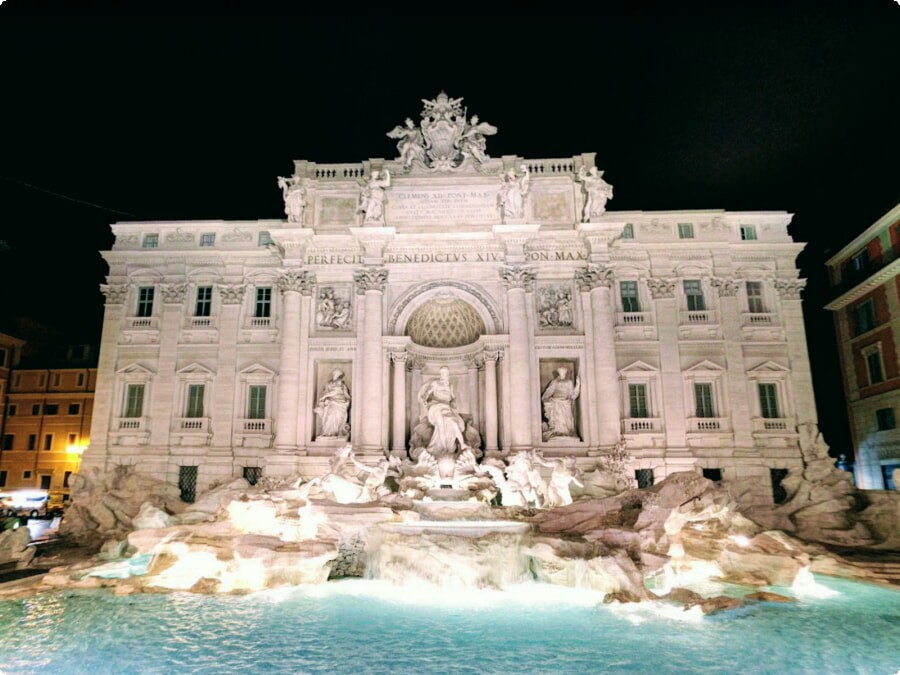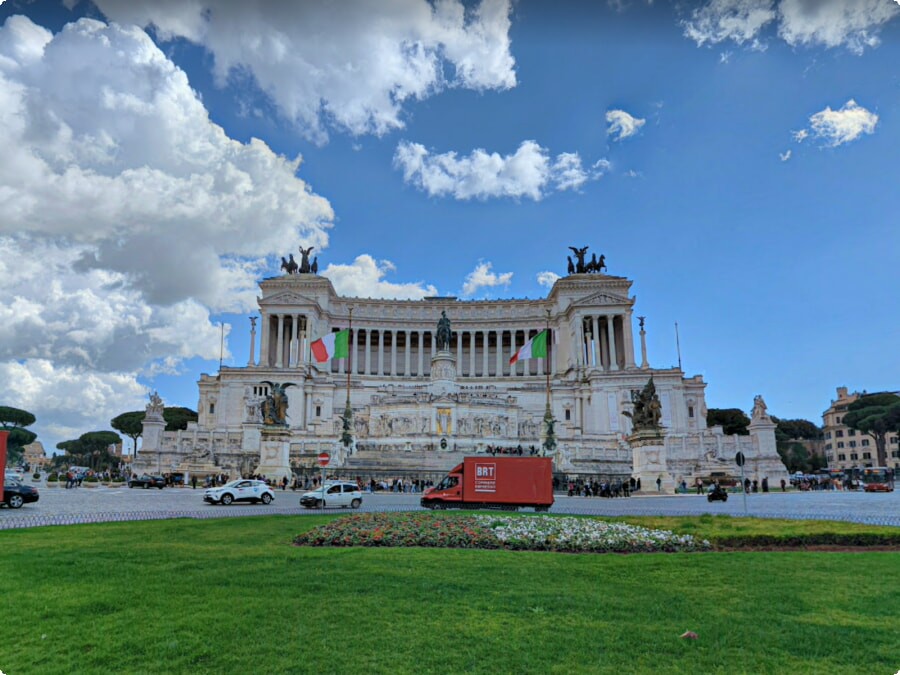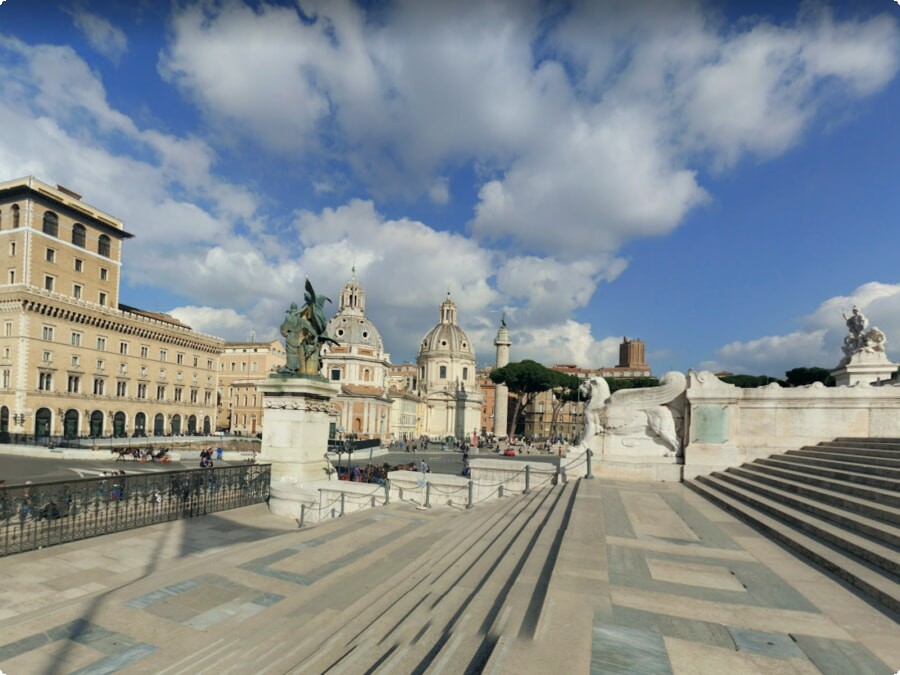Holidays in Italy
Holidays in Italy range from religious to national. While most public institutions like schools and post offices close on official national holidays, private businesses decide whether to open or not at their discretion.
Learn about holidays in Italy to make your visit even more special. For example, on Christmas Day Italians eat a festive dinner and end their evening with a slice of panettone.
1. Ferragosto
Ferragosto is the national holiday marking the assumption of Mary into heaven (in the Catholic Church this is celebrated on August 15). This is also the time when almost all businesses – especially small family-run ones – close for a week or two. Offices, schools, and professional offices shut down, and people head to the seaside, to lakes, or to mountains for their vacations. Many towns hold processions for the Virgin Mary in their historic centers.
In the Fascist era, Mussolini encouraged lower class citizens to go on subsidised trips during this period. This created the lasting custom of Italians heading out for a beach, a mountain, or to a cultural city on the holiday weekend. As a result, cities are quieter at this time of year and it is possible to have places like the Colosseum or the Pantheon all to yourself.
This is the last big national holiday of the summer, and therefore, it is celebrated with a good meal and often with a family gathering. Those who don’t go away will typically head out to local parks with their picnic baskets. The food served is often light, such as cold pasta dishes or salads, and in Sicily you’ll find gelo di melone – a chilled watermelon dessert that contains chocolate chips to imitate the seeds.
If you have a day off work around this time, I recommend you plan to celebrate it with a nice picnic lunch in a nearby park or your own garden. You’ll be sure to be in good company with fellow Italians who are likewise enjoying the quiet of this summer day. This is also a great opportunity to try out your new Italian recipe, or simply enjoy a few glasses of wine and some good conversation in the sunshine!
It is impossible to get acquainted with the sights of Italy in one day, as well as in a week, but you can see the maximum number of new places with the help of a rented car at one of the country's airports. For example, in Milan you can rent a car from 18 euros per day, in Rome - from 19 euros per day.

2. New Year’s Eve
Italians are big on celebration and they’re especially fond of holidays like New Year’s Eve. The customs vary from region to region, but there are a few rituals that all Italians share:
One of the most fascinating is their use of food to symbolize their hopes and dreams for the New Year. Lentils, for example, are a New Year’s Day staple because they signify longevity and wealth. Similarly, sausage is eaten because it symbolizes abundance. In the past, at the stroke of midnight, Italians used to throw porcelain out of their windows as a symbolic gesture to wash away all the bad luck of the previous year. (Unfortunately, this custom is no longer practiced for safety reasons).
In Emilia-Romagna, Bologna’s New Year’s Eve festivities include an effigy of the Old Year that’s wheeled into Piazza Cavour at precisely midnight and then chucked into a huge bonfire. The event is called “La Festa del Bue Grasso,” or the Fat Ox Fair, and it’s a spectacle unlike anything else in Italy.
Another Emilia-Romagna tradition is the feast of lentils at midnight. The tiny legumes are traditionally served with cotechino or zampone, pork sausages that are cooked in hollowed-out pig’s trotters. The sausages are sliced and the slices are said to look like coins, which brings good fortune in the New Year.
If you’re in search of a more refined New Year’s Eve, head to Florence for an evening of music and art with a view of the city lights from the Palazzo Vecchio rooftop terrace. Or, enjoy a dinner cruise on the water in Venice that includes a front-row seat to the spectacular fireworks show over the city’s canals.

3. All Saint’s Day
All Saints Day, November 1st is celebrated with many Italian families visiting grave sites and saying prayers. Unlike Halloween, which isn’t celebrated in Italy, this holiday, known as Ognissanti is all about remembering those who have passed on and enjoying time with family.
Depending on the region, people will have different traditions for All Saints Day. In the north of Italy, it is customary to make a “table of the dead” and invite those souls who have passed on to join the table. Typically, dishes like chestnuts, pumpkin, dried fava beans and spices are served.
In some regions, if someone is named after a saint they may receive gifts on this special day. This is known as their “onomastico” and it’s usually a big deal for children who may also get gifts from their family.
As with other religious holidays, many Italians will attend mass to celebrate the holiday. During this time the church will honor all the saints and martyrs who have gone before us. Similarly, some Italians will visit their family’s graves and place flowers, preferably chrysanthemums on the tombs of their loved ones.
All Saints Day is followed by All Souls Day, or Giorno dei Morti, on November 2. This is not a national holiday but it’s important to remember that Italy is a Catholic country and that the souls of the dead are treated with respect.

4. Easter
In the Catholic country of Italy, Easter - known as Pasqua in Italian (pronounced PAHS|kwah) – is big deal. This week-long holiday stretches from the Sunday before Palm Sunday to Easter Sunday and involves religious processions, parades, and reenactments of Christ’s resurrection.
This is a great time to visit Italy, particularly in the north, as springtime brings the mountain regions to life with beautiful wildflowers and greenery. Plus, many of the city and small-town churches will have beautiful crucifixes and other religious decorations for this time of year.
While the traditions of Easter vary slightly from region to region, many are shared throughout the country. Boiled eggs are a common symbol of the holiday, as are roasted lamb, which symbolizes the sacrifice of Jesus. Chocolate eggs - uova di Pasqua - are also ubiquitous around this time, as are small ones in the shape of a dove that are given to children at church services.
Depending on the area, the main celebrations may take place during Holy Week or on Easter Sunday itself. In the city of Rome, locals usually eat out for Easter lunch, while in smaller towns residents will celebrate with their family at home.
In the town of Bormio, in Lombardy, an elaborate procession of allegorical floats takes place on Easter Monday, while in Venice the Doge leads a parade of golden-robed participants carrying statues of Mary, Jesus and the Resurrection through the city. Other notable events include the Scoppio del Carro in Florence, where a cart of fireworks is pulled through the streets before being set off. This is a great time to visit Italy, as the weather is often lovely and the locals will be busy celebrating with their friends and families.

5. National Holidays
As fun-loving and extroverted as Italians are, they also know how to celebrate. Public holidays are an important part of Italian culture, as they allow people to spend time with their loved ones and pursue their passions. They also give a boost to the economy, especially tourism and retail. While governmental institutions are closed on these days, some restaurants and other businesses stay open to benefit from the increased traffic.
In addition to national holidays, Italy has a host of regional feast days and patron saint holidays that are observed throughout the country. These include Luminara, in honor of San Ranieri the patron saint of Pisa, which is held on June 16 each year. The city is lit up with candles and there’s a fireworks show on the River Arno. On 25 April, Liberation Day is a national holiday to commemorate the end of fascism and Nazi rule in Italy and the victory of the resistance movement.
All Saint’s Day is celebrated in a more somber fashion than in the US, with people visiting their relatives’ graves on November 1. Halloween has yet to reach Italy, but it is not uncommon for kids to dress up and take candy from neighbors.
The dates of these holiday vary each year based on the Catholic calendar. However, most Italians celebrate them in the same way. If you’re planning a trip to Italy, you should keep in mind that museums, restaurants and other places of interest will be closed on some of these days. You may be able to visit some attractions on other days, but it’s best to check ahead.